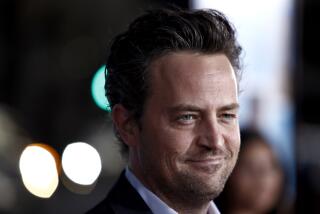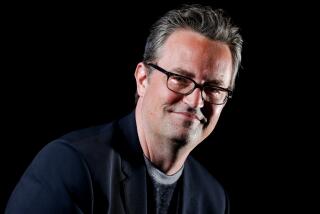A prescribed threat
- Share via
WHEN TOM CRUISE and his fellow Scientologists took a hammering earlier this year for their public opposition to psychiatric drugs, neither they nor their critics could have anticipated the releases in July and August of two weighty reports offering evidence that at least some psychiatric prescription-writing has run amok.
If these two reports by Columbia University’s National Center on Addiction and Substance Abuse, or CASA, have it right, more kids than ever have their fingers -- and sometimes their noses -- in somebody else’s psychiatric prescription pill bottle.
The July report (“Under the Counter: The Diversion and Abuse of Controlled Prescription Drugs in the U.S.”) estimates that while self-reported use of prescription drugs by people of all ages nearly doubled between 1992 and 2003, abuse by teenagers during those years tripled.
Similar increases appear in the August report, “National Survey of American Attitudes on Substance Abuse X: Teens and Parents.” Between April 2004 and June 2005, for example, “the percentage of teens who know a friend or classmate who has abused prescription drugs jumped 86%.”
In his introduction to the July report, CASA Chairman and President Joseph A. Califano Jr. zeroes in on the problem: “Particularly alarming is the 212% increase from 1992 to 2003 in the number of 12- to 17-year-olds abusing controlled prescription drugs, and the number of teens trying these drugs for the first time.”
Nor does Califano sugarcoat the question of just how close to home the problem hits: “The explosion in the prescription of addictive opioids, depressants and stimulants has, for many children, made the medicine cabinet a greater temptation and threat than the illegal street drug dealer, as some parents have become unwitting and passive pushers.”
At a time when many doctors, teachers and parents swear by the beneficial effects of prescription stimulants for minors, words as unsparing as Califano’s are likely to be dismissed as alarmist.
But these reports are not the only evidence of the harm done by these drugs to at least some kids. If we look at what kids say, sing and report about psychiatric medications, we learn that among the harshest critics of the child wonder-drug regimen are some of its intended beneficiaries and graduates.
Consider two music icons. The late grunge-rock guru Kurt Cobain appears in retrospect as a kind of anti-poster boy for child stimulants. Prescribed Ritalin from the age of 7, Cobain believed that the drug led to his later abuse of related substances. (He committed suicide by shotgun in 1994.)
Cobain’s widow, Courtney Love, put the connection this way to biographer Charles R. Cross: “Kurt’s own opinion, as he later told her, was that the drug was significant. Courtney, who also was prescribed Ritalin as a child, said: ‘When you’re a kid and you get this drug that makes you feel that [euphoric] feeling, where else are you going to turn when you’re an adult?’ ”
Marshall Mathers, a.k.a. bad-boy rap superstar Eminem, is another prominent self-perceived child victim of the label-and-medicate momentum. In an article in Rolling Stone magazine, Howard Stern said that Eminem told him that his mother “misdiagnosed him with attention deficit disorder. ‘My mother said I was a hyper kid, and I wasn’t,’ he said. ‘She put me on Ritalin.’ ” One telling Eminem hit called “Cleaning Out My Closet” includes the lyric, “My whole life I was made to believe I was sick when I wasn’t.”
It seems almost too perverse to be true: Cobain’s and Eminem’s fans might get a stronger anti-stimulant message from their icons’ examples than from their own parents, teachers and doctors.
Criticism of the child-drug phenomenon also comes from writers who self-identify as members of “the Ritalin generation.” One is Elizabeth Wurtzel, author of the books “Prozac Nation” and “More, Now, Again.” The latter detailed her harrowing descent into Ritalin addiction after a well-meaning doctor prescribed the drug to help her “focus” on writing.
Advocates of psychiatric medication for children often argue, and passionately, that these drugs alleviate the suffering of many children and families. But if that positive experience is to be a legitimate test, so too should the negative feelings and experiences of others be acknowledged.
“These [stimulants] are very safe medications,” a child psychiatrist at Harvard Medical School told a reporter in the wake of the July CASA report. “They have been used for 70 years, and we haven’t had terrible catastrophes.”
Yet it doesn’t take a Scientologist to wonder whether “terrible catastrophe” is the most accurate measurement.
More to Read
Sign up for Essential California
The most important California stories and recommendations in your inbox every morning.
You may occasionally receive promotional content from the Los Angeles Times.










